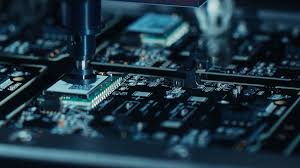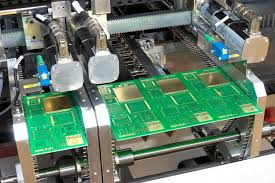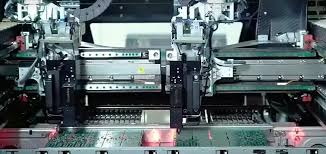Content Menu
● Introduction
● Importance of SMT Nozzle Cleaning
>> Impact on Production Quality
>> Economic Considerations
● Methods for SMT Nozzle Cleaning
>> Ultrasonic Nozzle Cleaning Machines
>>> Advantages:
>>> Disadvantages:
>> High-Pressure Water Mist Cleaning Machines
>>> Advantages:
>>> Disadvantages:
>> Advanced Ultrasonic Spray Cleaning Machines
>>> Advantages:
>>> Disadvantages:
>> Manual Cleaning Methods
>>> Drawbacks:
● Best Practices for SMT Nozzle Cleaning
● Comparison of Cleaning Tools
● Additional Considerations for Effective Cleaning
>> Environmental Impact
>> Training and Safety Protocols
>> Monitoring Performance
>> Cost-Benefit Analysis
● Conclusion
● FAQ
>> 1. What is the best method for cleaning SMT nozzles?
>> 2. Can I use alcohol for SMT nozzle cleaning?
>> 3. How often should SMT nozzles be cleaned?
>> 4. Are high-pressure water mist machines eco-friendly?
>> 5. What materials are compatible with advanced ultrasonic spray machines?
● Citations:
Introduction
SMT (Surface Mount Technology) nozzle cleaning is a critical process in electronics manufacturing. Proper cleaning ensures high-quality production, reduces downtime, and extends the lifespan of the nozzles. Contaminated nozzles can lead to issues such as mis-picks, skewed placements, and even missing components. This article explores the most effective tools and methods for SMT nozzle cleaning, providing insights into their advantages and limitations.

Importance of SMT Nozzle Cleaning
Impact on Production Quality
The cleanliness of SMT nozzles directly affects the quality of electronic assembly. As components shrink in size, the precision required in placement increases. Dirty nozzles can result in component misalignment, leading to defects that can compromise the entire circuit board's functionality. Regular cleaning is essential to maintain the integrity of the manufacturing process.
Economic Considerations
Dirty nozzles can also lead to increased costs due to wasted materials and labor. Misplaced components may require rework or scrapping of entire boards, significantly impacting production efficiency. By investing in effective cleaning methods, manufacturers can reduce these costs and improve overall productivity.
Methods for SMT Nozzle Cleaning
Ultrasonic Nozzle Cleaning Machines
Ultrasonic cleaning machines utilize high-frequency sound waves to create microscopic bubbles in a cleaning solution. These bubbles implode upon contact with surfaces, effectively removing dirt and solder residues from SMT nozzles.
Advantages:
- Thorough Cleaning: Ultrasonic machines are highly effective in removing stubborn contaminants that manual cleaning might miss.
- Multiple Nozzle Cleaning: They can clean multiple nozzles simultaneously, increasing efficiency.
- Versatility: Suitable for various nozzle materials, including metals and ceramics.
Disadvantages:
- Overlapping Issues: If nozzles overlap in the tank, cleaning efficiency may be reduced.
- Drying Limitations: Many models lack air drying capabilities, which can leave residual moisture.
- Potential Damage: The ultrasonic process can damage delicate coatings on some nozzles if not carefully monitored[1][2].
High-Pressure Water Mist Cleaning Machines
High-pressure water mist cleaning machines use pure water to clean nozzles through pulse cleaning technology. This method is known for its automation and eco-friendly operation.
Advantages:
- Automated Processes: These machines automate both the cleaning and drying processes, reducing labor costs.
- Cost-Effective: They do not require additional cleaning solvents, which lowers operational costs.
- Gentle on Nozzles: Using soft water helps prolong the lifespan of the nozzles by preventing corrosion[1][2].
Disadvantages:
- Limited Capacity: The number of nozzles that can be cleaned per cycle is often limited compared to ultrasonic systems.
- Effectiveness on Heavily Soiled Nozzles: May not be as effective for nozzles that are heavily soiled or caked with residue[1][2].
Advanced Ultrasonic Spray Cleaning Machines
These machines combine ultrasonic cleaning with spray technology to provide a comprehensive cleaning solution for high-precision nozzles.
Advantages:
- High Capacity: Capable of cleaning up to 60 nozzles at once, making it suitable for large-scale operations.
- Material Compatibility: Can clean a variety of nozzle materials such as tungsten steel and ceramics.
- Enhanced Features: Often include air drying and pulse pressure rinsing for thorough cleaning results[1][2].
Disadvantages:
- Higher Cost: These machines tend to be more expensive than traditional ultrasonic or manual methods[2].
Manual Cleaning Methods
Traditional manual cleaning methods typically involve using alcohol and air guns. While these methods are cost-effective, they have significant drawbacks.

Drawbacks:
- Labor Intensive: Manual cleaning is time-consuming and may require skilled operators to achieve consistent results.
- Inconsistent Results: The effectiveness of manual cleaning can vary greatly depending on the operator's skill level.
- Risk of Damage: There is a greater risk of damaging delicate nozzle components during manual handling[1][5].
Best Practices for SMT Nozzle Cleaning
To maximize the effectiveness of nozzle cleaning processes, manufacturers should adhere to best practices:
1. Regular Maintenance Schedule: Establish a routine maintenance schedule to prevent excessive buildup of contaminants.
2. Proper Handling Techniques: Train operators on proper handling techniques to avoid damaging nozzles during removal and installation.
3. Use Appropriate Cleaning Solutions: Select cleaning solutions that are compatible with the nozzle material to avoid corrosion or damage.
4. Inspect Nozzles Post-Cleaning: After cleaning, inspect nozzles for any signs of damage or wear that could affect performance.
5. Utilize Automation When Possible: Invest in automated cleaning solutions where feasible to enhance efficiency and consistency[2][5].
Comparison of Cleaning Tools
| Tool Type | Capacity | Cleaning Medium | Automation | Cost |
| Ultrasonic Nozzle Cleaner | Medium | Solvents/Water | Partial | Moderate |
| High-Pressure Water Mist Cleaner | High | Pure Water | Full | Low |
| Advanced Ultrasonic Spray Cleaner | Very High | Solvents/Water | Full | High |
| Manual Cleaning Methods | Low | Alcohol | None |
|
Additional Considerations for Effective Cleaning
Environmental Impact
As environmental regulations become stricter, manufacturers are increasingly looking for eco-friendly solutions. High-pressure water mist cleaners use deionized or distilled water without harmful solvents, making them an environmentally friendly option compared to traditional solvent-based cleaners[1][4].
Training and Safety Protocols
Training staff on safe handling practices when using chemical cleaners is essential. Proper training ensures that operators understand how to use equipment effectively while minimizing risks associated with chemical exposure or equipment malfunction[5].
Monitoring Performance
Implementing a monitoring system can help track the performance of SMT nozzles before and after cleaning. By analyzing data on pick-and-place accuracy and defect rates, manufacturers can assess the effectiveness of their cleaning methods and make necessary adjustments[9].
Cost-Benefit Analysis
Conducting a cost-benefit analysis when selecting a nozzle cleaning method can help organizations make informed decisions based on their specific needs and budget constraints. While advanced machines may have higher upfront costs, their efficiency and effectiveness could lead to long-term savings by reducing downtime and improving production quality[6][8].
Conclusion
Choosing the right SMT nozzle cleaning tool depends on specific needs and budget constraints. Ultrasonic machines are ideal for thorough cleaning, while high-pressure water mist machines offer eco-friendly solutions with automated processes. Advanced ultrasonic spray machines provide comprehensive cleaning capabilities but come at a higher cost. Manual methods, although inexpensive, are less effective and labor-intensive. For optimal performance and longevity of SMT nozzles, investing in appropriate cleaning technology is crucial.

FAQ
1. What is the best method for cleaning SMT nozzles?
The best method depends on your requirements. Ultrasonic and advanced ultrasonic spray machines are highly effective for thorough cleaning due to their ability to remove stubborn contaminants efficiently.
2. Can I use alcohol for SMT nozzle cleaning?
Yes, alcohol can be used; however, it is less effective than other methods and may not clean the nozzle lumen thoroughly, potentially leading to residue build-up over time.
3. How often should SMT nozzles be cleaned?
Regular cleaning is recommended after every production cycle to maintain optimal performance and prevent contamination issues that could affect production quality.
4. Are high-pressure water mist machines eco-friendly?
Yes, high-pressure water mist machines use pure water without additional solvents, making them an environmentally friendly option compared to traditional solvent-based cleaners.
5. What materials are compatible with advanced ultrasonic spray machines?
These machines can effectively clean nozzles made from various materials including tungsten steel, ceramic, and rubber materials commonly used in SMT applications.
Citations:
[1] https://silmantech.com/3-common-methods-for-cleaning-smt-nozzles/
[2] https://smtnova.com/practices-for-cleaning-smt-nozzles/
[3] https://www.youtube.com/watch?v=udHiOCx_1sU
[4] https://silmantech.com/summary-of-juki-smt-nozzle-cleaning-methods/
[5] https://www.gssmt-parts.com/how-to-clean-smt-nozzle.html
[6] https://www.joysmt.com/technique/398.html
[7] https://www.neodensmt.com/news/what-is-used-to-clean-smt-nozzle-48216762.html
[8] https://www.uic.com/universal-instruments-new-smt-nozzle-cleaning-solution/
[9] https://www.binghamton.edu/ssie/about/thesis_abstract_kriti_kode.pdf
[10] https://silmantech.com/cleaning-and-maintenance-methods-for-pick-and-place-machine-nozzles/




















